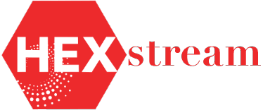First Splash: An Intro To Non-Revenue Water Opportunities
We’ve been discussion utilities’ opportunities with non-revenue water around the HEXstream offices lately, and we figured we’d all benefit from a refresher about this trending topic. Below see a Q&A with our utility industry specialist, Satish Saini, who provides a primer on non-revenue water.
HEXstream: How do you define non-revenue water?
Satish: Utility water-supply systems provide water for all types of consumption…think individual households, commercial/industrial consumers and institutions, public facilities such as parks, fire hydrants, etc. We consider some of these “authorized consumptions” that can be metered or unmetered. The majority of these authorized consumptions are billable, and created direct revenue for the water suppliers. Others—fire hydrants, public fountains—are authorized but not billable. Water suppliers earn no revenue from these.
The topic of non-revenue water also includes physical losses such as leakages in the systems, water lost during breakdowns, unauthorized use of public water facilities, theft, meter tampering, and even inaccurate and faulty meters etc. These contribute to lost revenue, as do errors related to meter reading and billing.
All of these elements are part of the non-revenue water (NRW) discussion.
HEXstream: Why is water loss and incomplete/inaccurate billing such a problem for water utilities?
Satish: Utilities have to spend a lot money on water-treatment plants, water-delivery systems consisting of pumping/piping systems, and a host of other assets and their operational and maintenance expenses. But significant losses in the delivery leads to uneconomical operational systems and unsustainable business. The ultimate financial burden fall on consumers in the form of rate hikes and tax increases. Lastly, there is the conservation element; water is a key natural resource that must be used judiciously.
Consider this—according to a World Bank Study, each year more than 32 billion cubic meters of treated water physically leaks from urban water-supply systems around the world. In the US alone, revenue losses from non-revenue water for some companies can run in excess of 25%.
HEXstream: How are power and water utilities alike in their distribution challenges?
Satish: They are similar in many ways. Energy and power-distribution systems are huge, scattered and aging, which is similar to current water-supply distribution systems. Both struggle with reliability issues, leakages and breakdowns. In power systems, the big issues are accurately detecting fault and outage locations and sending the crews to exact locations to restore power; this is similar to water leakages where you have breakdowns and burst pipes. Both sides struggle with aging infrastructure and accurately detecting the right location to attend breakdowns as early as possible to reduce waste and damages.
And consider losses. Energy transmission and distribution losses result from theft, pilferage, inaccurate billing, asset failure, etc. Water distribution struggles with infrastructure leaks, unauthorized use, tampering and reading/billing errors.
HEXstream: What smart strategies and technologies are available to help utilities more efficiently distribute and bill water to their customers?
Satish: First is the digitization of water-supply infrastructure records and databases. We must create smart asset registries and mapping with GIS to accurately track and monitor performance with relevant locations. We must achieve digital transformation with IT including IoT (Internet of Things) elements such as sensors to measure operational parameters like pressure and water flow, leak-detection sensors, AMI/smart meters for remote readings and automated billing, artificial intelligence and data-driven analytics for efficient asset-performance insights, quicker detection of usage anomalies, automated loss detection strategies, quantification analytics and many more techniques.
HEXstream: Why should utilities consider modern tools and techniques to optimize their efforts?
Satish: Because there are a host of benefits. The most prominent include:
- Improved efficiency with real time and relevant analytics and insights on infrastructure and
asset operations, maintenance health/performance and reducing waste - Proactive management of assets, operations and breakdowns (e.g., leak detection, illegal
connections, fraud detection, and equipment failures) with improved crew management - Cost savings with reduced losses (physical and apparent) and O&M costs
- Enhanced customer satisfaction and engagement
- Data analytics and insights supporting long-term water sustainability
- Optimized resource utilization and enhanced reliability
- Data-driven investment planning and regulatory compliance
- AI-driven infrastructure performance, operational insights and predictive maintenance
DID WE WHET YOUR WHISTLE? STAY TUNED FOR DEEPER DIVES INTO NON-REVENUE WATER ISSUES. AND CLICK HERE TO CONTACT US ABOUT IMPROVING YOUR WATER-DISTRIBUTION INSIGHTS.
Let's get your data streamlined today!
Other Blogs
Intelligent Process Automation is the Future of Utility Operations
There is no doubt that utilities have begun adopting process automation solutions at an accelerating rate. Much commentary on this trend, however, sug
A New Imperative for Utilities to Manage their Unbilled Revenue
“While regulators generally allow utilities to recover prudently incurred costs from ratepayers, utilities are always cognizant of the effect rising c
The ESG Movement for Utilities
“ESG-oriented investing has experienced a meteoric rise. Global sustainable investment now tops $30 trillion—up 68 percent since 2014 and tenfold sinc
